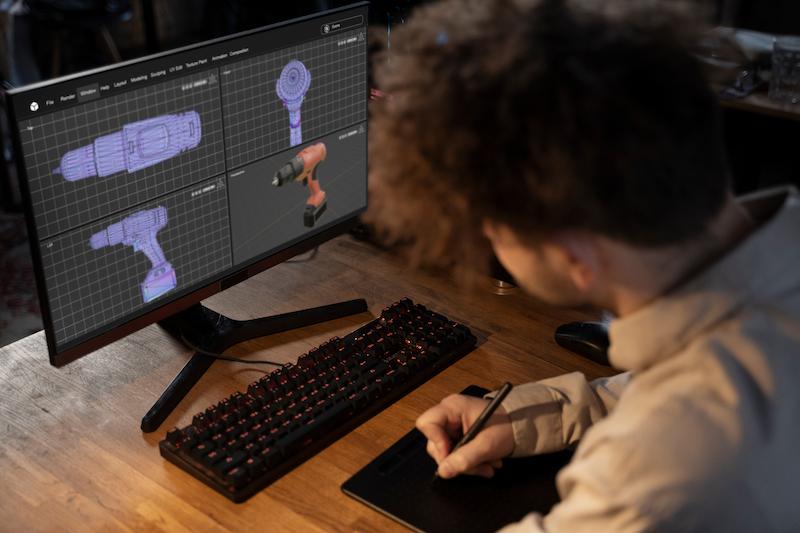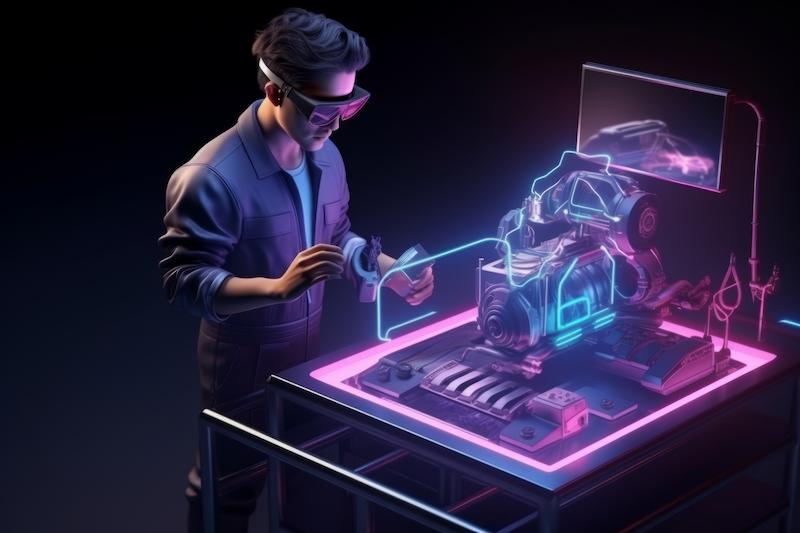In today’s fast-paced world of product development, efficiency and precision are key to achieving true success. As 3D scanning technology becomes increasingly accessible, designers and engineers have harnessed its potential to accelerate design processes while maintaining exceptional accuracy. Here are several ways 3D scanning is shaping the future of product design.
1. Streamlined Reverse Engineering
Reverse engineering has long played a crucial role in product development, whether modernizing legacy products or refining existing designs. The advent of 3D scanning has introduced advanced techniques that significantly accelerate the modeling process. Key benefits include:
- Accurate Measurements: 3D scanning provides a fast and precise method for capturing complex geometries that are often challenging to measure using traditional approaches.
- Faster Iterations: Unlike slower conventional measurement techniques, 3D scanning rapidly generates a detailed point cloud mesh, capturing all dimensions in one go. This enables CAD modeling directly from the scan, streamlining the transition from measurement to product iteration.

2. Enhanced Prototyping
Prototyping lies at the heart of product design, and 3D scanning elevates this process by delivering key advantages:
- Quality Control: Verifying critical dimensions ensures prototypes align with design specifications, minimizing the need for multiple iterations. Fewer revisions translate to less waste, reduced inefficiencies (muda), and a more sustainable, cost-effective workflow.
- Faster Iterations: Many designers, particularly in the automotive industry, begin with hand-sculpted clay models. 3D scanning swiftly converts these physical forms into digital assets, enabling CAD modelers to accelerate the refinement process.
- Stronger Starting Point: When tackling specific design challenges, a 3D scan of the problem itself provides an accurate foundation. This allows designers to craft precise solutions from the outset, further cutting down on iterative adjustments.
3. Customization and Personalization
Humanity’s rich diversity means that not all products can cater to a universal audience. 3D scanning bridges this gap by making personalized design more accessible:
- Human-Centered Design: By scanning human anatomy, 3D technology enhances the fit and functionality of medical devices, prosthetics, and other products that interact with the body, tailoring them to individual needs.
- Tailored Solutions: Just as each person’s anatomy is unique, so too are the environments and objects they use. 3D scanning captures these distinct contexts—whether human spaces or existing products—enabling custom designs that address specific challenges with precision.
4. Seamless CAD Software Integrations
Modern 3D scanning solutions streamline the transfer of captured data into your preferred computer-aided design (CAD) software, enhancing workflow efficiency:
- Direct Data Import: Today’s 3D scanners export scan data into widely supported formats like Stereolithography (.STL) or Object (.OBJ) files. Most modern CAD platforms natively accept these formats, enabling designers and engineers to import scan data effortlessly and build models directly on or around it. This eliminates tedious manual data entry, reducing the likelihood of errors.
- Enhanced Flexibility: Advances in hardware and software simplify the handling of high-resolution 3D scans. Designers can now manipulate detailed data with ease, free from the slowdowns of cumbersome file sizes, unlocking greater creative and technical freedom in their work.
5. Accelerated Quality Control
Quality assurance and product validation are cornerstones of effective product design, and 3D scanning enhances both processes with precision and speed:

- Real-Time Inspection: Advanced quality control software integrates with 3D scanning to provide real-time colormaps and analysis. This allows metrologists to assess data instantly, draw conclusions swiftly, and implement manufacturing adjustments promptly, minimizing waste and downtime.
- Complex Surface Analysis: Intricate geometries—like airfoils, propellers, or other wear-prone surfaces—can be thoroughly evaluated using 3D scanning. From detecting dents to ensuring compliance with strict industry standards, this technology simplifies and accelerates the inspection of challenging designs.
6. Design Innovation Fueled by Data-Driven Insights
Designers can make informed, innovative decisions by leveraging rich, actionable data from 3D scans:
- Real-World Insights: Analyzing data from multiple 3D scans of a specific challenge helps refine solutions. For instance, scans of people’s ears can guide headphone design, enhancing comfort and sound quality based on actual anatomical diversity.
- Creative Freedom: Many designers prefer sculpting with models or clay to express their ideas, as 2D sketches often lack depth and detail. Converting these physical sculptures into digital CAD files with 3D scans supports further refinement for design-for-manufacturability (DFM) and other processes.
7. Advancing Sustainability
Sustainability is now a critical focus in modern product design, and 3D scanning contributes in meaningful ways:
- Material Optimization: By minimizing material use and waste during prototyping and manufacturing, 3D scanning enhances efficiency. Metrologists leverage scans to swiftly identify and address issues early in a product’s life cycle, reducing resource consumption.
- Extended Product Life: For worn or damaged components, precise 3D scans deliver measurements that enable engineers and mechanics to assess and repair parts effectively, prolonging their usability and reducing replacement needs.
Conclusion
Advanced 3D scanning solutions are shaping the future of product design and offering unrivaled precision, efficiency, and flexibility. Its applications are gaining ground and affording design transformations and revolutionized product development-from reverse engineering through customization to sustainability. As technology continues to evolve, integrating 3D scanning into your product design workflow will provide a competitive advantage and unleash new possibilities for innovation. Welcome aboard this futuristic technology to take your designs to the next level and meet the ever-changing demands of today’s market.

